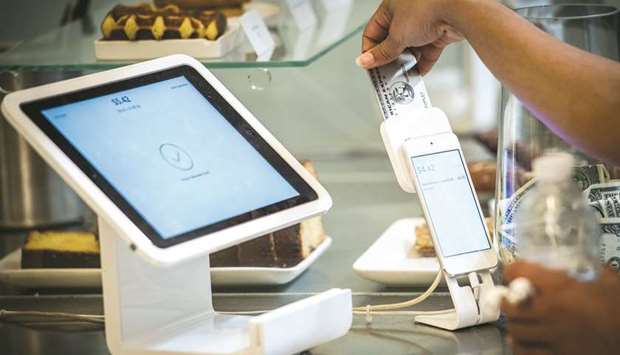In 2015, ‘Millennials’ became the number-one source of global income, spending, and wealth creation.
In a recent research a vast majority (76%) of Millennials were seen having their financial engagements on mobile devices.
It also revealed that person-to-person payments (P2P) were being preferred by some 68% of Millennials or ‘Generation Y’, a term usually used to describe individuals who reached adulthood around the turn of the 21st century.
Obviously, Millennials are the new major customer segment and their expectations include mobile and peer-to-peer instant payment.
Beginning in the ‘70s, airlines began deploying mainframe computers and, in the mid-’90s, started using the Internet to allow passengers to plan travel, purchase tickets and even to access their frequent flier programmes.
Now the industry is moving — at an uneven speed, to be clear — to a new generation of digital technology that allows for cross-function data sharing, increased process efficiencies and better experiences for passengers, Forbes said in a recent report.
The pace is picking up as Millennials and younger travellers increasingly shape passenger demographics. One survey indicated that nearly 40% spend more time with their smartphones than with family, friends and co-workers.
Nearly two-thirds shop on smartphones every day. A 2016 Deloitte global mobile survey headline said it all: “Life’s essentials: Air, water, food, and smartphones.”
Two trends are noteworthy here. Global smartphone users are expected to top 6bn by 2021. And global mobile payments are projected to rise from the $620bn reported in 2016 to more than $1tn over the next two years.
The online, electronic payment industry is still considered by most to be a very diverse, constantly evolving one fuelled by significant consumer adoption on a global level.
Those entrenched in the digital payments industry are all positioning themselves and waging a war for dominance of this expanding and rapidly growing sector.
The global aviation industry is among the first to notice that the consumer payments landscape is changing rapidly.
Credit cards continue to be hugely popular in the developed world, but newer payment forms are emerging as well, in the developed and developing worlds.
An IATA estimate said the global airline industry’s payment processing costs add up to $8bn a year, with leading credit card companies usually charging between 1% and 3% in fees.
The global trade body of airlines is working on developing an industry-wide payment solution that it says is an “alternative to credit cards.”
The system being developed by IATA in association with a leading European bank will charge a fixed fee, which will not be “substantial”, IATA said recently.
The project is made possible by a new EU’s payments regulation that is forcing banks to give third parties access to customer data and initiate payments.
At a presentation made at the Global Media Day in Geneva in December 2018, IATA director (FDS Transformation) Eric Leopold said the association’s payment activities this year will focus on four areas — direct ticket sales between consumers and airlines, facilitating new payment methods, digital currency and airline remittances through travel agents.
A new regulation in Europe, called PSD2, enables instant bank account-to-bank account payment. The UK has taken a similar approach called ‘Open Banking’ and some other countries are also reportedly moving in this direction.
Responding to these developments, he said IATA is developing a prototype to support instant payments when consumers purchase tickets directly off airline websites. The solution, called ‘IATA Pay’, will potentially go-live this year.
For consumers, the benefit is a new payment method that does not require a credit card and is more secure than a traditional online card transaction, while airlines benefit from increased security, and also from a lower transaction cost compared to a credit card.
“The proliferation of new forms of payment is a welcome development, particularly in emerging economies where large parts of the population may lack access to credit cards and even traditional bank accounts,” Leopold noted. But, he stressed, it also creates a “challenge” for airlines that may operate in dozens of different markets, each with its own payment forms.
For example, if a foreign airline wants to sell tickets in China they need to accept cards like ‘Union Pay’ and mobile payment like ‘wechat’, while there may be entirely different payment options in India they need to be able to handle.
For this reason, IATA built a solution for airlines to accept payment, multi-channel/worldwide coverage/along all the customer journey. The product, called ‘IFG’, went live last year.
IFG connects, on one side with the airline, and on the other side with multiple forms of payment. It makes it easy for an airline to offer any form of payment to a consumer who is shopping on its website.
Obviously, trendy and foolproof payment systems are the need of the hour in global travel industry, if it is to meet the evolving customer needs and expectations.
Pratap John is Business Editor and Chief Business Reporter at Gulf Times.
Business / Business
Room for trendy, foolproof travel payment systems as consumer payments landscape evolves

A customer inserts a credit card into a Square device while making a payment in San Francisco. Those entrenched in the digital payments industry are all positioning themselves and waging a war for dominance of this expanding and rapidly growing sector.

